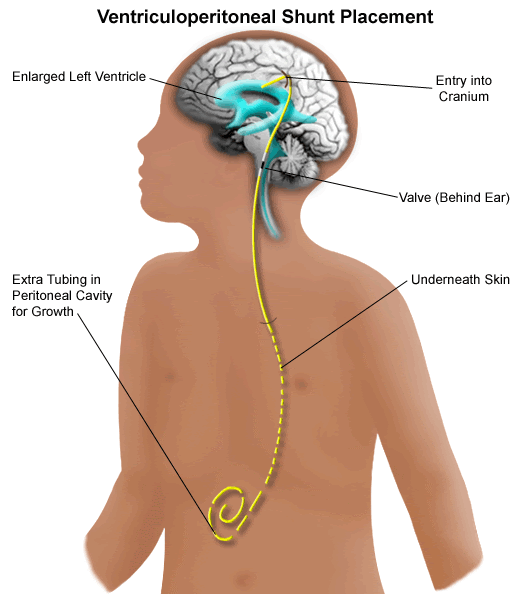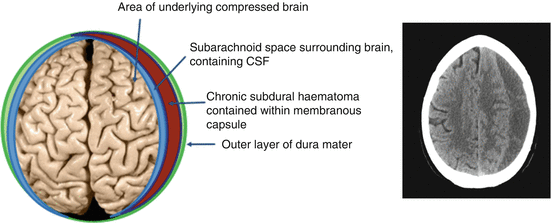
Brain injuries
- Zeljko Kojadinovic, MD- Neurosurgeon and Pain Specialist Brain injuries
Brain injuries
- Skull fractures
- Brain injuries
- Brain consussion
- Intracranial hemorrhage (hematomas)
- Posttraumatic epilepsy
- Posttraumatic hydrocephalus
- Chronic subdural hematoma
- Prognosis and outcome
- Forensic expertise
Head and brain injuries are common, especially in younger men. The most common causes of injury are traffic accident, falling from a height, injuries in a fight, other falls, gunshot injuries. The frequency of causes is different in different countries (USA, Nigeria, Kenya, Tanzania, Germany, Japan, etc.). These injuries are called craniocerebral injuries or neurotrauma. During the injury process, the whole head, including the brain, receives some degree of energy which causes damage.
Head injuries can be divided into:
- Skin injuries (pericrania)
- Skull injuries
- Injuries to the brain and other elements within the skull
Skull fractures
Skull fractures can be divided into skull vault fractures and skull base fractures. They can be linear, depressed, diastatic, and basilar, single or multiple. It is especially dangerous if there are multiple fractures above which the skin is injured and dirty (open fractures). Fractures are also dangerous when bone fragments protrude inside the skull, tearing the dura mater and put pressure on the brain. Fractures that spread downwards to the face (sinuses, eye sockets – orbits) are particularly complex.
A skull fracture always requires attentive monitoring of the patient because it indicates that the head has received a great amount of traumatic energy and that other types of injuries may have also occurred. There are often injuries below the fractures (e.g., injuries to the arteries of the meninges with bleeding and the formation of hematomas; injury to the facial motor nerve during fractures of the temporal bone).
If there are fractures in the front part of the base of the skull, discharge of blood and/or cerebrospinal fluid on the nose (CSF leakage) may occur. In the case of a fracture of the temporal bone, blood often leaks from the ear.
The diagnosis is made on the basis of X-rays and CT (computed tomography) images of the skull.
Most fractures are so-called linear fractures which, if isolated, require only monitoring. Surgical treatment is necessary if the fracture leads to greater pressure on the brain, if bone parts are dirty, or if there are other reasons for the development of infection (leakage of cerebrospinal fluid, communication with sinuses).



If a defect remains after a skull fracture, it can be replaced with artificial materials (cement, metal plates) during the same or a subsequent operation. The cosmetic effects can be very satisfactory.
Brain injuries
The brain can be injured by direct or indirect traumatic forces. Injuries can then be localized in one, several or many places in the brain. Injuries that directly or indirectly lead to damage of the brain stem are especially dangerous (see the anatomy on the introductory page).
Direct brain lesions can include brain concussion, brain contusion and diffuse axonal lesions.
Indirect brain damage most often occurs when, by bleeding inside the skull, a blood clot (hematoma) forms, which puts pressure on the brain. Depending on the location of the clot, there are epidural hematoma, subdural hematoma, hematoma in the brain (cerebral hematoma). Blood may also be present in the cavities where the cerebrospinal fluid is located (subarachnoid hemorrhage, intraventricular hemorrhage).

Clinical picture and management
The injuries described above cause damage to different parts of the brain, which can manifest in various ways (e.g. limb palsy, seizures, facial muscle paralysis, mental alteration). In the most severe injuries, an unconscious state called a coma occurs. A coma can have several levels. It is scored according to the Glasgow coma scale (GCS – a comatose patient can have a score in the range of 3-8, with 3 being the worst, while normal is 15 points).
If the patient is comatose, first aid measures at the site of injury are extremely important, which should prevent further brain deterioration. These measures should first of all ensure satisfactory breathing and arterial pressure (which are often disturbed in comatose patients at the location of injury).
In the hospital, after the patient has been examined, an urgent scan (CT scan) is performed, on the basis of which a diagnosis is made.

If a formation that puts pressure on the brain (hematoma, fracture, etc.) is found, it must be surgically removed. The operation involves opening the skull (similar to the procedure described for a brain tumor), removing the clot that is compressing the nerve structures, and stopping bleeding. If possible, operations should be performed on the hairy part of the head, so that the incision is not visible later.

When the brain shows significant damage and the patient is comatose, the pressure in the skull (ICP – intracranial pressure) is measured for several days. If it increases, it must be reduced with medication or surgery so that there is no additional brain damage. There are various therapeutic procedures for lowering elevated intracranial pressure.
In addition to surgery, especially in cases of diffuse brain injury, complicated non-surgical therapy is always needed. It is carried out in the intensive care unit (ICU). In addition to neurosurgeons, intensivists and anesthesiologists also participate in the treatment. This treatment should decrease the pressure inside the skull; decrease brain swelling; support the work of all organs (breathing, heart function, digestive organs, kidneys, etc.). If the patient is comatose, an anti-decubitus program should be used to prevent bedsores. With severe brain injuries, complications often occur in other organs as well. These can include respiratory tract infections, hypertension, cardiac arrhythmias, gastric ulcers, diarrhea or constipation, urinary tract infections, changes in blood lab, etc. Comatose patients are particularly susceptible to these complications. Patient monitoring ensures that these complications are diagnosed and treated in time. As many as 50% of deaths are due to subsequent brain damage, which can be the result of these complications.
Brain concussion
This is a common injury and is diagnosed based on a conversation with the patient in which he usually does not remember one period before, during or after the injury. This period can last anywhere from a minute to a day (post-traumatic amnesia). Loss of consciousness and direct impact to the head are not mandatory for the diagnosis. The diagnosis can also be established if the patient complains of memory loss; headaches; difficulty with thinking, concentration or balance; nausea; blurred vision; sleep disturbances; and mood changes. The symptoms can last from a few days to a few months. They are manifested in the form of headaches, dizziness, tinnitus, nausea, vomiting, disturbances of concentration, fears, nervousness, etc. This is called post-concussion syndrome and lasts longer if the injury was more severe or if the patient already has various vegetative ailments. This injury does not have long-term consequences. As for the forensic qualification, some experts classify this injury as mild, and some as severe. Generally, if the problems last longer, it makes sense to do a magnetic resonance imaging of the brain and see if there are structural brain injuries, and not just a concussion. These changes are not usually visible on CT scans. Finding these changes on the MRI scan can help to give a prognosis and forensic qualification of injuries. Treatment is symptomatic – painkillers (analgesics), anti-nausea medication, sedatives. In addition, it is important to talk to the patient because vegetative problems are a cause for concern, and concern exacerbates these problems and can create a vicious cycle, especially in emotionally labile people.
Most often, a headache remains after such injuries. If the headache is persistent, it should not just be blamed on the concussion, but the patient should be examined more carefully. In most cases the headache is not caused by a concussion at all, and the sources of the headache can be diagnosed and treated.
The types of injuries described are often combined. In addition to these, there are other types of skull and brain injuries that are not described here because they are rarer. One such example is a gunshot brain injury.
Complications of brain injury
Epilepsy: may occur immediately or several months to a year after the injury. It is treated according to the principles of epilepsy treatment. A single epileptic seizure does not mean that the patient suffers from epilepsy. Epilepsy medications do not have to be taken forever, especially if the seizures were in the first two months after the injury. Their elimination or replacement is determined with the help of an EEG recording (electroencephalography) and consultation with a neurologist-epileptologist.
Hydrocephalus: involves the accumulation of cerebrospinal fluid (CSF) in the cavities of the brain (ventricles). It is also popularly called “water on the brain.” The accumulation of fluid increases the pressure on the brain and causes swelling. Therefore, the excess fluid must be removed. This is achieved by temporary drainage in cases where the hydrocephalus is transient. If it is permanent, an internal drainage system must be installed. The system consists of tubes and valves. Through them excess cerebrospinal fluid is carried from brain ventricles to another part of the body where it will return to the bloodstream. This is most often the abdominal cavity (through a ventriculoperiotonal shunt – VP shunt).

Chronic subdural hematomas may manifest weeks or months after head injury. They occur more often in the elderly; alcoholics; patients who have poor circulation through the brain, especially if they have previously suffered strokes; those suffering from brain atrophy due to other causes; and patients taking anticoagulants. Sometimes minor bleeding under the meninges occurs immediately after the injury, but does not clinically manifest. This occurs in people whose space between the skull and the brain is dilated due to brain atrophy, a subarachnoid cyst, etc. This amount of blood does not initially press on the brain. However over time it wraps itself in a membrane (capsule), the blood in it becomes liquid, and the whole formation begins to expand. The hematoma then begins to press on the brain and cause dysfunction.
The treatment is operative and surgeons will always first attempt to remove the liquid part of the hematoma through a small opening in the skull. In the vast majority of cases, a larger skull opening is not necessary(craniotomy).
Sometimes, if the pressure on the brain by a chronic subdural hematoma is not significant, the hematomas are only monitored by repeated CT scans of the brain. Conservative treatment can be applied (corticosteroids, embolization of medial meningeal artery, etc.). If they do not increase, the blood in them will be resorbed. After the hematoma has healed, however, the predisposing factors for their occurrence remain. So, the patient must pay attention even to mild head injuries.


Through many years of surgical treatment of brain injuries, we realized that this is what interests the relatives of the injured the most.
An exact prognosis, except for in the case of very severe or very minor injuries, cannot be given, especially not at the very beginning.
Damaged nerve tissue recovers in several ways: reducing brain swelling; improving brain circulation; reducing pressure on the brain through resorption of blood; improving nerve cell metabolism; healthy parts of the brain taking over the function of the damaged part (plasticity); reestablishing connections between nerve cells; some forms of regeneration also occur. Treatment consists of providing the nervous tissue with optimal conditions for recovery (treatment reduces swelling, improves circulation, removes sources of pressure on the brain, maintains optimal blood composition, prevents and treats many complications that occur in these patients, etc.). There is still no drug that enables the regeneration of nervous tissue or significantly affects it.
Factors that contribute to a poor prognosis include: age; poor brain circulation; diabetes; a comatose state, especially if it existed from the beginning; signs of major brain and brainstem damage (clinical or CT scan).
The deeper the patient’s comatose state, the worse the prognosis. Recovery occurs in stages. The prognosis improves as the patient moves from stage to stage. Improvement in the beginning depends mostly on stages of recovery of the brainstem. The stages of recovery are: the beginning of independent breathing; sufficient expectoration of mucus; greater independent movement of the patient in bed; onset of swallowing. After reaching this stage, recovery goes faster and its degree depends on the location and size of the brain damage.
Recovery can take 2 years or longer. Usually 75% of what will recover is recovered in the first 6 months. Because of this, it is important, among other things, to start physical therapy early. If, after surgical treatment, limb weakness remains, physical therapy should continue in specialized departments.
There are 4 stages of the final outcomes for survivors:
I – Good recovery without significant long-term consequences
II – Moderate disability, if minor neurological or psychological deficits remain
III – Severe disability
IV – Vegetative state – the patient opens his eyes and has some spontaneous movements, but does not establish any communication with the environment.
The effects still in place one year after the injury can, in the forensic sense, be considered permanent. These can include, to a greater or lesser extent:
- Psychological-psychiatric deficits which are manifested as disorders: opinions, perceptions, concentrations, learning and memory, emotional disorders and behavioral changes (Psychoorganic syndrome – POS),
- Neurological deficits are results of injury of certain parts of the brain or nerves. There are a large number of them and they can occur in various combinations. The most common are the weakness of one half of the body (hemiparesis), weakness of facial muscles, and visual field loss.
- Hormonal disorders.
- Residual scars or defects of the skull bones.
Forensic expertise
Over the course of many years of work as neurosurgeons, and as long-term court experts, we had the opportunity to examine numerous injuries and diseases in the field of pathology of the head, spine and nerves.
The task of the expert most often consists of determining the severity of the injury, taking into consideration potential danger to life; the pain that the patient suffered; the fear that the patient suffered; the impairment; and whether or not he has suffered a permanent decrease in general and vital abilities.
There are a number of other requirements for establishing the facts in court proceedings (e.g., the mechanism of the injury; how much pre-existing conditions are responsible for the patient’s condition; whether the progressive injuries and diseases are covered by contractual insurance, etc.).
In order to effectively provide expertise, it is important to know the regulations and court practice related to medical expertise, in addition to knowledge of medical theory and clinical practice.
Search
- Consultation with a team of neurosurgeons
- Pain Consultation – Ultimate Guide to Pain Management 2023
- Pain treatment
- Trigeminal neuralgia – facial pain
- Headache
- Occipital headaches and occipital neuralgia
- Shoulder pain
- Knee pain
- Pain in heel, foot and Achilles tendon
- Herpes zoster neuralgija
- Polyneuropathy
- Fibromyalgia
- Postoperative pain
- Pain of unknown origin
- Pain that mimics internal organs disease
- Residual pain after acute COVID-19 infection
- Spinal tumors
- Brain injuries
- Nerves
- Neurosurgery
- Cervical disc herniation
- Back pain and disc herniaton
- Brain tumors
- Cerebrovascular Diseases
- Congenital diseases of the nervous system
- Nervous system infections
- Functional neurosurgery
- Diseases
- Online consultation
- Services
- Contact Us
- FAQ
- SCHEDULE CONSULTATION
- Zeljko Kojadinovic, MD- Neurosurgeon and Pain Specialist
- Privacy policy
Calendar
| M | T | W | T | F | S | S |
|---|---|---|---|---|---|---|
| 1 | 2 | 3 | 4 | 5 | 6 | 7 |
| 8 | 9 | 10 | 11 | 12 | 13 | 14 |
| 15 | 16 | 17 | 18 | 19 | 20 | 21 |
| 22 | 23 | 24 | 25 | 26 | 27 | 28 |
| 29 | 30 | |||||

